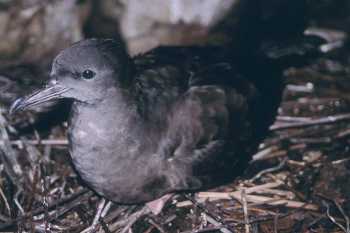Susan Waugh (Museum of New Zealand Te Papa Tongarewa, Wellington, New Zealand) and colleagues write open-access in the journal Marine Ornithology on the shearwaters and other seabirds of the Gambier Archipelago in French Polynesia. “…four southern islands had populations of three species of shearwater: Christmas, Wedge-tailed and Audubon’s shearwaters, Puffinus nativitatis, P. pacificus and P. lherminieri, respectively, all found in small numbers.”
The paper’s abstract follows:
“We visited the Gambier Archipelago in April 2010, and noted the presence of 15 species of seabirds. An additional species was noted in 2008 and 2011 during a visit by members of our team. The species and breeding populations are significant for the French Polynesian region, including nesting Polynesian Storm-Petrel Nesofregetta fuliginosa, listed as Endangered by the International Union for the Conservation of Nature (IUCN). We noted nesting by 11 species, including confirmation of the presence of breeding Red-footed Booby Sula sula, previously noted in 2008. The islands in the south of the archipelago were the main focus for our study, as they had been proposed as sites for island restoration through removal of introduced mammal species. These were Manui, Kamaka, Makaroa and the tiny islet of Motu Teiku. These sites held the richest and most numerous populations of seabirds in the archipelago, and, as they are very near to one another and relatively inaccessible due to difficult landing conditions, they presented the best opportunities to safeguard the important large seabird populations of the south of the French Polynesian Region.”

A "Wedgie" photographed by Alan Burger
Reference:
Waugh, S., Champeau, J., Cranwell, S. & Faulquier, L. 2013. Seabirds of the Gambier Archipelago, French Polynesia in 2010. Marine Ornithology 41: 7-12.
John Cooper, ACAP Information Officer, 27 July 2013

 English
English  Français
Français  Español
Español